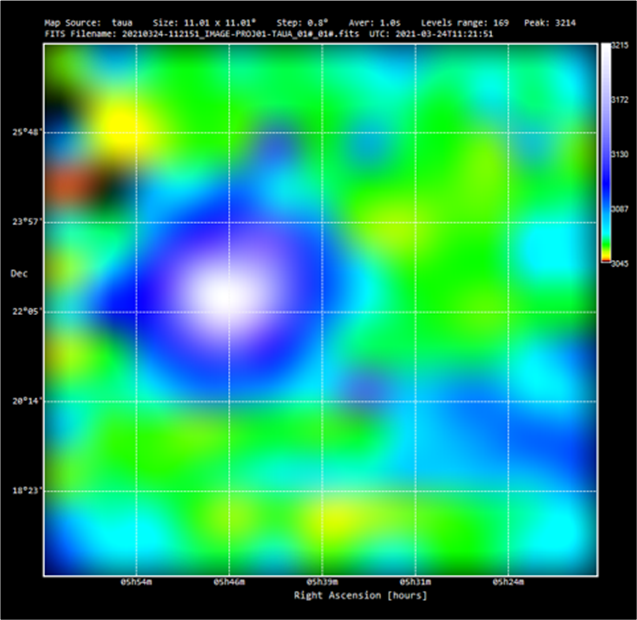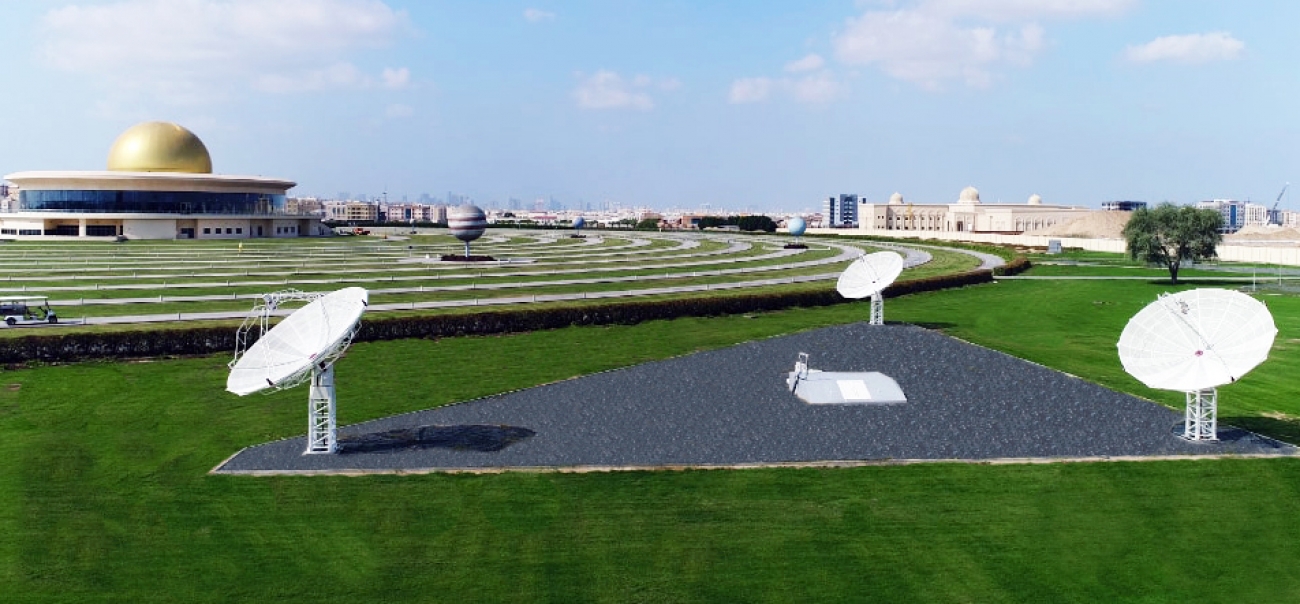The gaseous remnant, Taurus A, is located 6500 light-years away from Earth and scales to about 10 light-years. The nebula contains a pulsar; a rotating neutron star; at is very center. The Crab pulsar emits radiation in the visible, radio, gamma-ray, and X-ray spectra. It rotates about 30 times in one second.
A Hubble image of the Crab Nebula in the visible light spectrum shows its intricate filamentous structure. The Crab pulsar is visible as a white dot in the center of the nebula in an X-ray image observed by Chandra X-ray Observatory.

Caption: Hubble Space Telescope mosaic image of the Crab nebula
Taurus A was observed with the Sharjah 5m radio telescope at 1.4GHz on the 24th of March 2021. The bright 7x5 arcmin nebula is clearly visible as the white region in the radio map.

Caption: Sharjah radio telescope radio image of the Crab nebula



